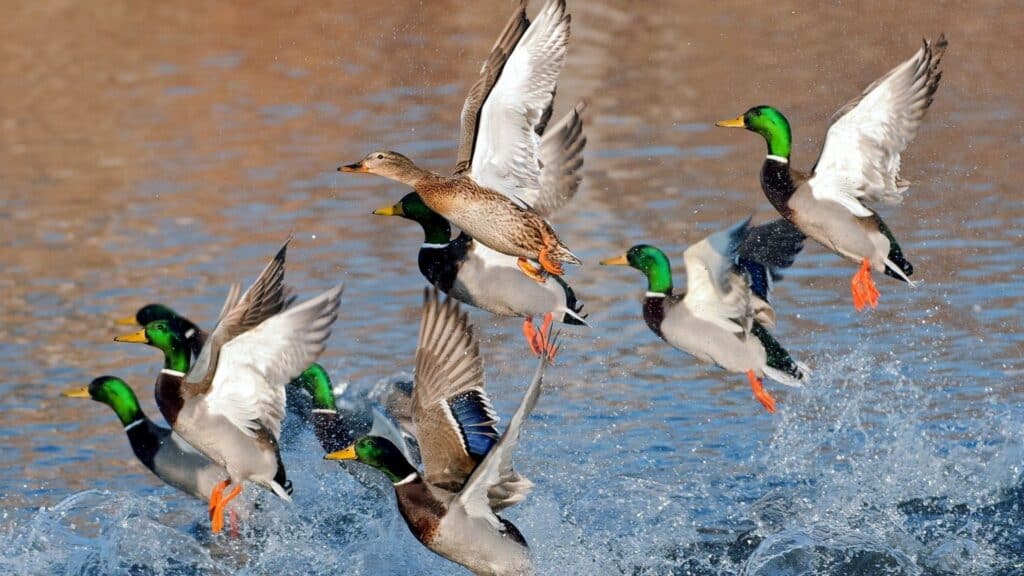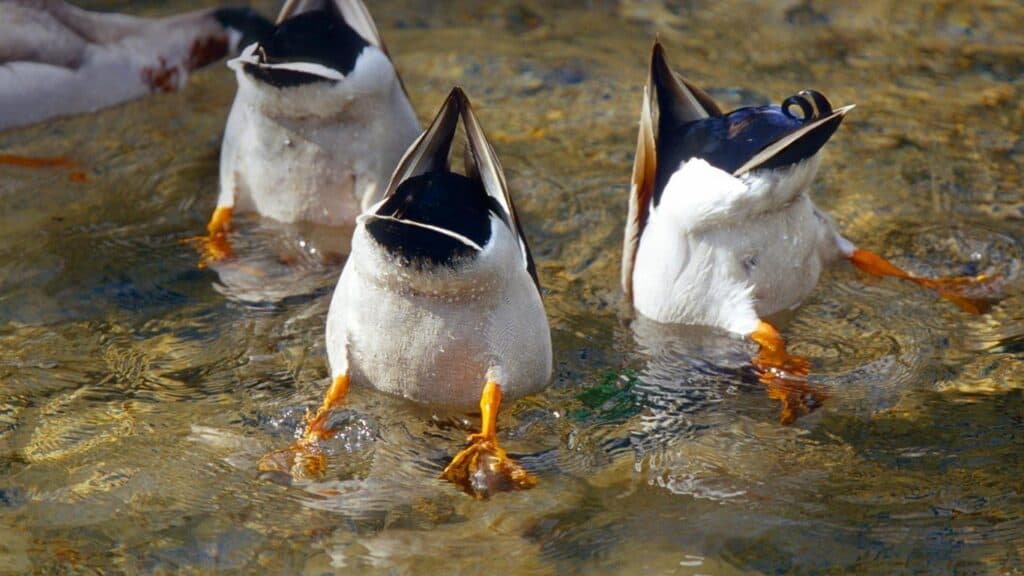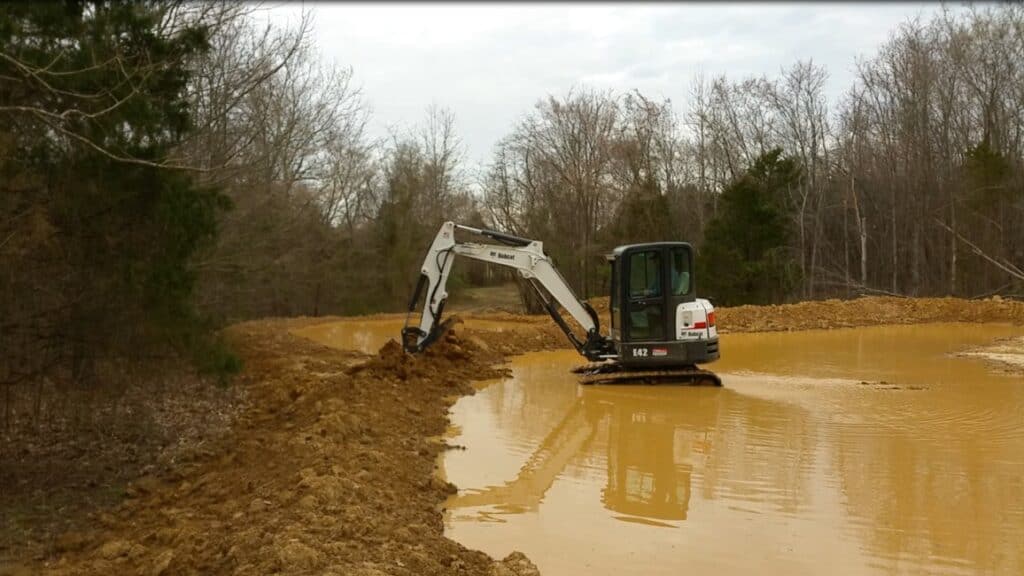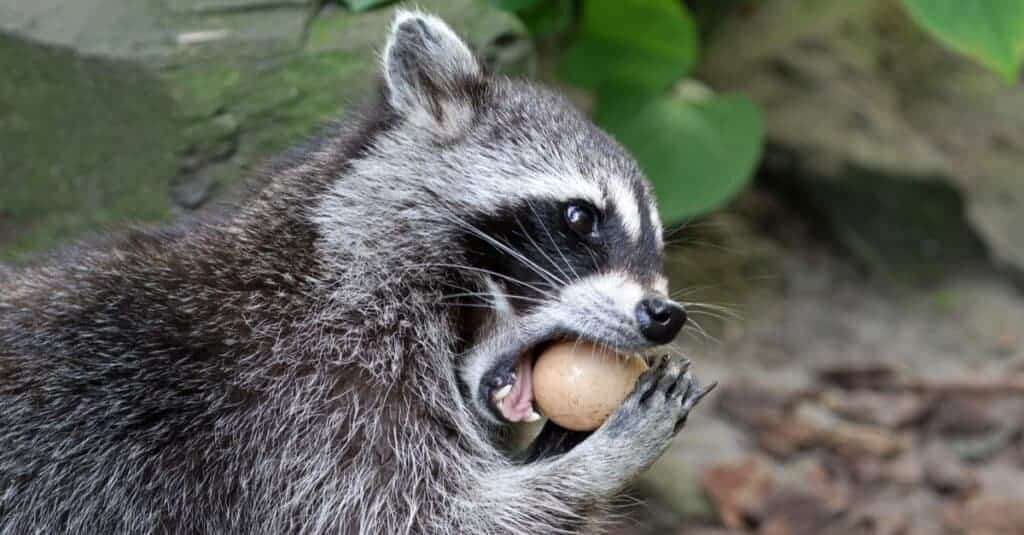Duck hunting is easily one of the most exciting types of hunting there is, until the ducks stop coming around. We have all had spots that dry up, or a spot that doesn’t produce as well from one year to another. If that has happened to you, you are probably hoping I have a few golden nuggets for you, and luckily I do.
Usually, we try to attract things like whitetail with baits or social sites. There is plenty of content out there about that, and most hunters already know the basics, but attracting ducks is probably a foreign idea to a lot of people. It definitely doesn’t work the same way as attracting deer, and it is often much harder.
If you own the land, you are ahead of the curve. You can actually do some habitat improvement and have work you do this year pay off for years to come. If you are hunting public land, or somewhere you are not willing to dump work into, we will have to revert to some more basic tactics, or finding a new spot all together. Either way, here are some quick links to those receptive sections that you can click if you already know what you’re looking for before we dive in.
- When Habitat Improvement Doesn’t Make Sense
- Try Some New Decoy Tactics
- Give Them Plenty to Eat
- Creating or Improving The Pond Itself
- Add Cover, Security, and Nesting Areas
- Reduce Predation
If the idea of large scale habitat improvement is a little intimidating, or if you don’t own the land and it doesn’t make sense to put that much work into it, that is totally okay. I am going to start off with the tactics that I would use to see more ducks on a plot of land I don’t own, which are tactics that anyone can use, owner or not.

When Habitat Improvement Doesn’t Make Sense
If habitat improvement isn’t an option for you, or something you aren’t willing to do, how can you attract more ducks? Luckily, there is plenty that you can do. For starters, you can rein in your presence. Ducks are just like any other animal, human pressure is going to make them go elsewhere. If you have ducks coming around your water and never landing, they don’t feel safe enough.
To make ducks feel safer, standard literature tells you to plant a lot of vegetative cover. That is a great idea, but not if you don’t want to do habitat improvement. What you can do is triple check your blind and make sure it is as hidden as possible. Remove any and all things human that ducks may see from the air. That means you might need to park a little farther away, and do some work on your blind but it will be worth it.
While you are at it, it is a good idea to try and open up your water. What I mean by that is cutting down any overly bushy plants or small trees that aren’t feeding the ducks. This is going to make your water look much bigger from the sky. Bigger/more accessible water will attract more ducks, and you can make a pretty good dent in your pond during a single evening.
Now, whether you like it or not, federal regulation states that no one can bait waterfowl. You can in fact plant things before the season that ducks would eat, but we will get to that later. So all you can really do if you do not want to try your hand at large habitat improvement is open up the pond, and reduce the human presence in the area. If you are hunting public land and there are just too many hunters there scaring ducks, well, you will either have to deal with it or find another spot.
Try Some New Decoy Tactics
If what you are doing just isn’t working, what is the harm in trying something completely off the wall? If you go looking online, you will find plenty of suggestions on how you should place your decoys. The bad news is that there isn’t necessarily an all-encompassing decoy spread that is guaranteed to lure in every duck in the neighborhood, but there are some tried and true methods that work better than simply scattering them without a plan.
One effective decoy spread for river or narrow hunters is the U spread. This is simply where you spread your decoys in the shape of a U, with the bottom of the U pointing down stream, and the sides of the U budding up to the bank. All hunters will sit on one side of the bank brushed in, and when ducks land, they will naturally go in the middle of that U, feeling very safe with so many ducks around.
Did You Know I Had a Newsletter?! 📬
I do! I send out a weekly email that talks all about deer hunting and is a bit more personal than a regular article. If you sign up right now, I will even send you the first chapter of my Ebook “The Hunters Guide to Scent Control” for free! What is there to lose? 🙂
If you are hunting a more open body of water, you can try out a spread that has clusters of decoys instead of a well defined shape. You can make it into a standard U or J spread, but instead of having your decoys in a well defined line or shape, just put them in 4 to 6 decoys clusters. This will break the pattern up, and if you are hunting spooky migratory ducks, they may not have seen that spread before.
My personal favorite spread is one I use in a small marsh. It will work well in any small body of water though. Generally, I spread my decoys out around the edges of the water. Not all the way on the bank, but I generally outline it. You end up with somewhat of a circle. Then in the middle, or slightly offset from the middle, I put out my jerk string. If you haven’t heard of a jerk string before, it is basically just a row of ducks on a string that is tied to a short pole out in the water. When ducks come overhead, I can jerk that string/paracord and make them move. It is a cheap and highly effective way to add a lot of movement into your spread.
Just like with food sources, diversity is important when using decoys. Don’t be afraid to use different-sized decoys that include geese, mallards, drakes, and other waterfowl species. Place the duck decoys closer to you if you are calling a lot. Ducks seem to pinpoint sound better than geese so not seeing duck decoys near where all the sound is coming from may alert them.
If you have tried all the spreads, and adding movement, and you just can’t seem to make anything work, try nothing at all. I have killed dozens of ducks during hunts where I didn’t place a single decoy or make a single sound. Sometimes, when there aren’t a ton of ducks in the area or they are pressured, going completely unnoticed is the way to go.
If you want to know more about this strategy check out my other article here where I went over how to duck hunt without calling at all.
Give Them Plenty to Eat
Being that ducks are omnivorous migratory animals that travel long distances every year, they are always on the lookout for places to land and refuel their tanks. Lucky for us they are quite voracious eaters and will remember a good place when they find it, just like us when we find a good restaurant.
The diet of a duck requires amino acids. This comes from sources that provide proteins, fiber, fats, and minerals. These are found in many native plants and animals that live in and around most ponds and lakes. Ducks consume hundreds of different plant species and insects. Ensuring that your pond contains at least a few of the best plants that are native to your general area will greatly increase your chances of attracting ducks while also encouraging them to stick around for a longer period.

Adding food to your property is a sure fire way to bring in just about any animal. You can go as crazy as you want with it. You can cut down inferior trees, build out large food plots, and spend as much time as you want improving the duck pond. I can say that if you spend some time and find out what is best to plant for ducks in your area, and put in the effort to plant it, you will see returns. As for larger habitat management like tree cutting, planting, or clearing brush and helping already present vegetation grow, you will see returns on that work for years to come.
Ducks love a variety of grasses and plants, but a go to crop is always millet. There are a few different kinds of millet, but I have planted it myself before a season, and I can say by the end of the season, every duck that made it out of the pond was fat and happy. It takes a lot of work, but actually planting things, cutting bad trees, and putting in that hard work is the only way to actually improve your land and make it naturally more attractive to ducks.
Creating or Improving The Pond Itself
It’s no secret that ducks and water go together like peanut butter and jelly. Any prolific hunting area for ducks needs to have an ample water source to attract our feathered friends. When it comes to the size of your pond, bigger is always better for attracting more ducks. That being said, a larger pond will require more maintenance and will require additional work when spreading decoys and choosing setup locations.
In general, there are two ways you can increase the size of your duck pond, the easy way, and the hard way. The hard way is to use some equipment to physically dig out the pond to make it bigger around the edges. This can get as complicated as you want it to, and it will take plenty of work, and money if you need to rent equipment.
However, if your hunting spot is fed by a creek or river, you can flood it instead of build it. One year in my duck pond, the beavers had built a huge dam that held back a ton of water. It made our duck pond as big as it had ever been, and the fact was, we had more ducks than we’ve ever had that year. Then the dam washed out, and the ducks got fewer and farther between. You can build your own dam up, and accomplish the exact same thing.
Pond size depends on how large of a duck population you are trying to sustain. Ducks need ample room to feed, bathe, and nest. To give you a concrete starting number, the Minnesota Dept. of Natural Resources recommends a minimum pond size of 2,500 sq. ft. This equates to a square-shaped pond with 50 ft. long sides or a circular pond with a diameter of about 57 ft.
There’s no need to go overboard with dredging your pond to make it deeper either. The majority of duck species will be happy with a depth of 18”-24”. Species that prefer to dive will benefit from depths closer to 24” while species that don’t dive to feed are perfectly fine in depths of 12”-18”.

Add Cover, Security, and Nesting Areas
Just like deer and the majority of other popular hunting species, simply providing a food source isn’t enough. To keep an animal around for a long time, you need to provide cover crops. Think of these cover crops like a security blanket for a duck. Food may be enough to draw them in, but an area to sleep and nest increases the chances of turning your pond into a long-term home.
Some plants can double as a food source and a cover crop, so I am going to focus on the best plants for creating both in this section…two birds, one stone! Best of all, the majority of these plants are native to North America and Europe.
- Japanese Millet (Echinochloa esculenta) – Long-lasting, self-seeding, forage source. Cheaper than corn.
- Wild Rice (Zizania aquatica) – Annual self-seeding species.
- Water Celery (Vallisneria americana) – This is an aquatic plant that tolerates saline water, spreads rapidly, and doubles as a food source. It is also known to filter toxic particulates out of ponds.
- Coontail (Ceratophyllum demersum) – This very common aquatic plant can help support algae colonies.
- Soft Rush (Juncus effusus) – A nutrient-rich ornamental plant that attracts birds and mammals. It grows best along shorelines. Submerged sections of plants attract small fish.
- Hard Rush (Juncus inflexus) – Very tolerant to dryer conditions. Great for creating cover further away from your pond.
- Broadleaf Arrowhead (Sagittaria latifolia) – Known to produce gigantic colonies along shorelines (Up to 65 ft. in length!). One of the best native plants for creating cover while promoting insect and fish populations.
- Broadleaf Cattail (Typha latifolia) – Synonymous with wetland/riparian areas. Ducks use the fruits as nest-building materials and some species use them as a food source as well.
- Smartweed (Persicaria sp.) – Great source of fiber and carbs, especially during mating season. Can grow pretty much anywhere that is adjacent to a water source.
- Greater Pond Sedge (Carex riparia) – Large rhizomatous sedge that can grow to over 4ft. tall. Ducks will use the leaves as food and nest-building materials.
Even if you had the perfect home, you probably wouldn’t like it too much if a giant predator came running through it all the time. So, after you put the effort in to make the ducks feel secure, don’t mess it up by being in it all the time. Of course, when you’re doing habitat improvement, there is no way to avoid being out there, but if you don’t need to be there, don’t be.
Reduce Predation
We aren’t the only species that enjoys hunting and eating ducks. There is a long list of common animals that prey on duck populations. It’s unrealistic and generally a bad idea to remove predators entirely from an area (from an environmental health standpoint), but you also want to make sure they aren’t running rampant and decimating your duck populations.

Some of these species will target full-grown ducks but almost all of them will target nests and hatchlings for an easy meal. Removing one predator doesn’t mean the problem will stop. An ongoing predator management plan is required to sustain a thriving duck population. A good habitat will always attract predators. Regular action is always necessary.
If you don’t have a degree in wildlife biology then how do you know if you are harvesting enough or too little predators? Contact your local professionals! Most every county or state will have a Department Of Wildlife, Natural Resources, or something similar. Many of the people involved in these departments make a career out of managing and promoting wildlife populations. More often than not they are a great resource for information on your local plants and animals.
Trapping
Depending on where you live, there is a very good chance that you are allowed to hunt or trap common predators. This method can obviously be lethal but it will take care of predators until a new one moves in. If you aren’t a trapper, many people are and know what they are doing that would love to take on a new property to manage. Most of the time these people will be happy to trap for no further charge than the pelt of the animal they remove from the area.
Take care to make sure you aren’t eliminating predators that don’t feed on ducks, but there’s a good chance they will keep the important predatory species in check. You will also want to figure out if you want to keep the beavers or not. If a beaver dam is what makes your pond thrive, removing the beavers is probably a bad idea.
Final Thoughts
Whether you want to attract more ducks to your pond to hunt, birdwatch, or help control the aquatic animal populations, the most effective methods are the same. Provide the ducks with an undisturbed area, ample amount of depth and surface area of water, abundant food sources, and areas for cover and nesting. Control local predatory populations, and get creative with your decoy spreads.
Creating a fully functioning duck habitat takes more than just digging out a pond. If you are able, investing the time and money to develop more food sources and cover crops will increase the probability of ducks choosing to regularly use your pond. Regulate the predator population. If the habitat is right, you will have more ducks that you know what to do with.
Sister Post | Can You Duck Hunt Without Calling?
A sister post is another post that I have written that follows along with the same topic as the one you just read. After reading this article, you will probably like this next one even more! Here is a little teaser…
When you first start duck hunting, it can be pretty intimidating. There are so many new things to learn, it can have you running in circles. So, to lighten the load, you try to go down to the basics to see what you can cut out…Keep Reading
Duck Behavior Without Calling
Believe it or not, ducks will land in a pond that does not have a human blowing as much as they can on a duck callParagraph cut down some more…Keep Reading
The Perfect Duck Call
Another thing you can do if you choose to not use a duck call is let a small group of one to three ducks land in the pond if the opportunity presents itself…Keep Reading
Thank you for reading my article! I hope you enjoyed it, and if you have any questions or feedback, please send me an email at [email protected]. If you want to learn more about me or Omega Outdoors, visit my About Page. Otherwise, I hope you have a great day, and check out some of my other articles while you’re here!

